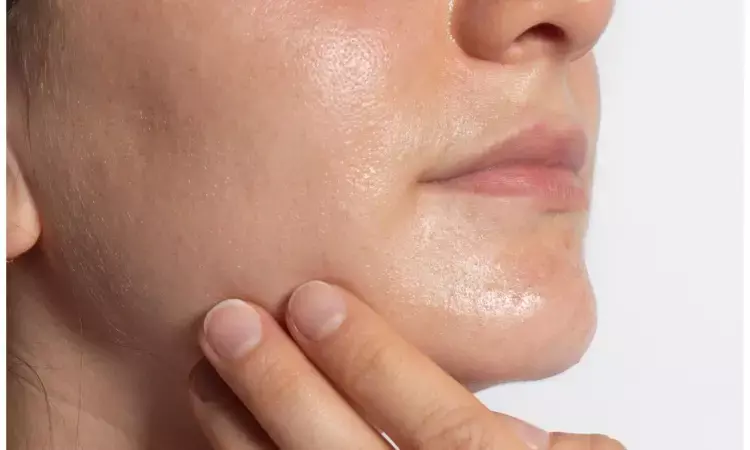- Home
- Medical news & Guidelines
- Anesthesiology
- Cardiology and CTVS
- Critical Care
- Dentistry
- Dermatology
- Diabetes and Endocrinology
- ENT
- Gastroenterology
- Medicine
- Nephrology
- Neurology
- Obstretics-Gynaecology
- Oncology
- Ophthalmology
- Orthopaedics
- Pediatrics-Neonatology
- Psychiatry
- Pulmonology
- Radiology
- Surgery
- Urology
- Laboratory Medicine
- Diet
- Nursing
- Paramedical
- Physiotherapy
- Health news
- Fact Check
- Bone Health Fact Check
- Brain Health Fact Check
- Cancer Related Fact Check
- Child Care Fact Check
- Dental and oral health fact check
- Diabetes and metabolic health fact check
- Diet and Nutrition Fact Check
- Eye and ENT Care Fact Check
- Fitness fact check
- Gut health fact check
- Heart health fact check
- Kidney health fact check
- Medical education fact check
- Men's health fact check
- Respiratory fact check
- Skin and hair care fact check
- Vaccine and Immunization fact check
- Women's health fact check
- AYUSH
- State News
- Andaman and Nicobar Islands
- Andhra Pradesh
- Arunachal Pradesh
- Assam
- Bihar
- Chandigarh
- Chattisgarh
- Dadra and Nagar Haveli
- Daman and Diu
- Delhi
- Goa
- Gujarat
- Haryana
- Himachal Pradesh
- Jammu & Kashmir
- Jharkhand
- Karnataka
- Kerala
- Ladakh
- Lakshadweep
- Madhya Pradesh
- Maharashtra
- Manipur
- Meghalaya
- Mizoram
- Nagaland
- Odisha
- Puducherry
- Punjab
- Rajasthan
- Sikkim
- Tamil Nadu
- Telangana
- Tripura
- Uttar Pradesh
- Uttrakhand
- West Bengal
- Medical Education
- Industry
Topical hydroquinone and hexylresorcinol equally effective for reducing skin pigmentation

USA: For reducing the appearance of facial and hand pigment, hexylresorcinol 1% is well-tolerated and comparable to hydroquinone 2%, a recent study in Archives of Dermatological Research has claimed.
Dyspigmentation is a common skin problem faced in dermatology. The first-line topical medication currently used in the US is hydroquinone. The use of hydroquinone is linked with potential safety concerns, including systemic absorption, cytotoxicity to melanocytes, production of potentially carcinogenic metabolites, and metabolism in distant organs. Hexylresorcinol is an ingredient used as an antiseptic and in food preservation and has been shown in vitro to inhibit tyrosinase and has been researched as a novel skin-lighting agent.
Against the above background, Hera Wu from California Northstate University in Elk Grove, CA, USA, and colleagues aimed to perform a double-blind, randomized split-body examination of comparison on topical hexylresorcinol and hydroquinone on hands and face to examine for change in the appearance of skin pigmentation and tone.
For this purpose, the researchers included thirty-two healthy female participants aged 35–65 with skin type I–IV. They were randomized to use either 2% hydroquinone or topical 1% hexylresorcinol on the left or right side of the face and relative hand over 12 weeks. The topical preparation was administered twice a day to assigned areas. Standardized photos of the face were taken, and colorimetric calculations were carried of both sides of the cheeks, forehead, and each hand at baseline, considered Day 0, week 4, and week 12. Out of the 32 participants, three were lost to follow-up and est were included in the final analysis.
The authors showed that pigmentation measured by colorimeter and clinical grading was reduced significantly at 4 and 12 weeks compared to baseline, with no difference between the hydroquinone and hexylresorcinol groups. The authors reported no adverse events with either intervention.
"Hexylresorcinol 1% is well-tolerated and comparable to hydroquinone 2% for lessening the appearance of facial and hand pigment," the researchers wrote. "Further research is warranted with a longer time course and expanded population."
Reference:
Wu, H., Gabriel, T.A., Burney, W.A. et al. Prospective, randomized, double-blind clinical study of split-body comparison of topical hydroquinone and hexylresorcinol for skin pigment appearance. Arch Dermatol Res (2022). https://doi.org/10.1007/s00403-022-02514-0
Dr Kamal Kant Kohli-MBBS, DTCD- a chest specialist with more than 30 years of practice and a flair for writing clinical articles, Dr Kamal Kant Kohli joined Medical Dialogues as a Chief Editor of Medical News. Besides writing articles, as an editor, he proofreads and verifies all the medical content published on Medical Dialogues including those coming from journals, studies,medical conferences,guidelines etc. Email: drkohli@medicaldialogues.in. Contact no. 011-43720751


